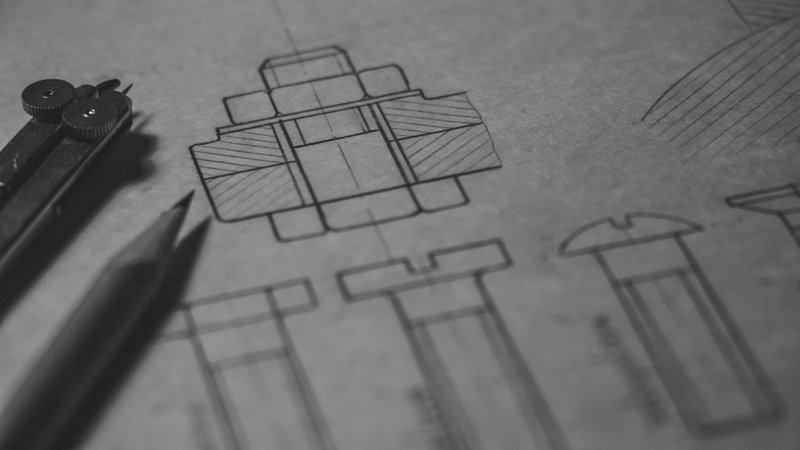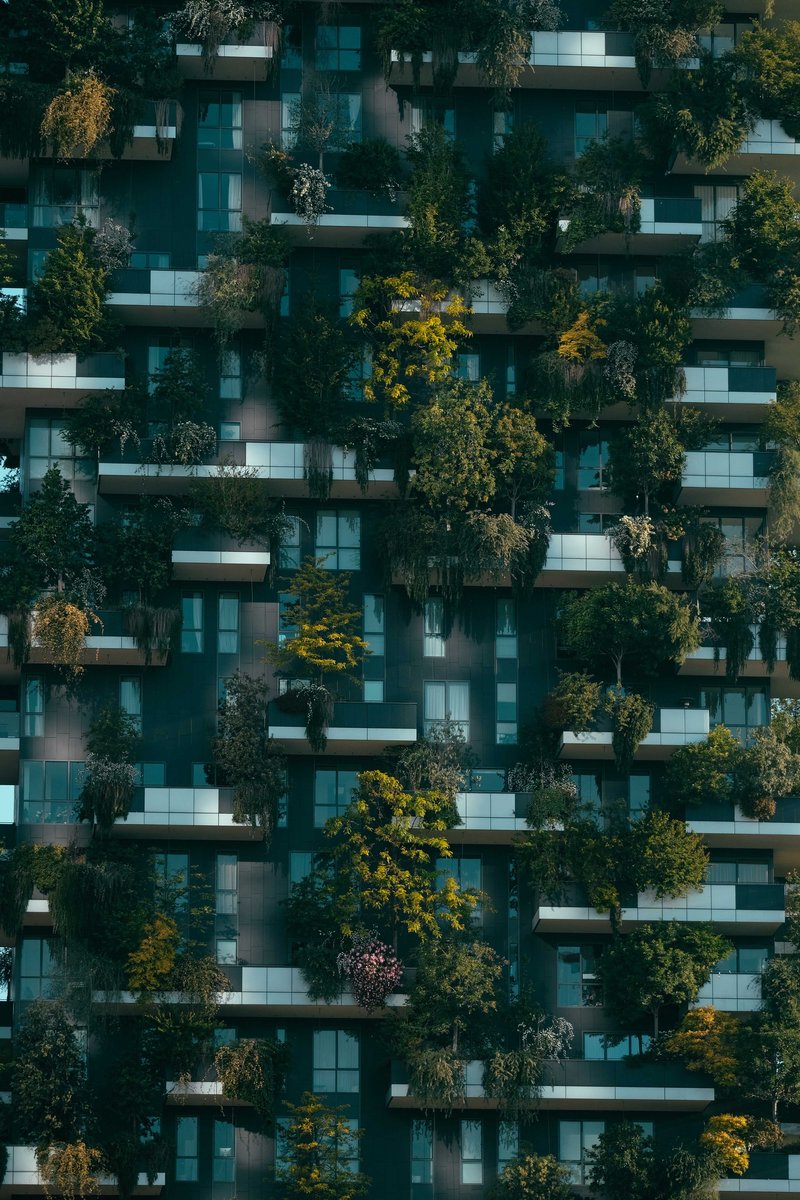Architectural Rendering Trends 2023: Exploring the Future of Rendering
Architectural rendering plays a vital role in the design process, enabling architects and designers to visualize and communicate their ideas effectively. These realistic visual representations allow clients, stakeholders, and project teams to understand and experience a project before it is built. As technology continues to advance, architectural rendering techniques are evolving rapidly, pushing the boundaries of what is possible. In this article, we will delve into the future of architectural rendering, exploring the latest trends and innovations that are shaping the industry.
Evolution of Architectural Rendering Techniques
Architectural rendering has come a long way, transitioning from traditional hand-drawn renderings to the use of cutting-edge digital rendering technologies. In the past, architects relied on hand-drawn sketches, watercolour paintings, and physical models to present their designs. These methods required significant time and effort, limiting the ability to make quick changes or present multiple design options.
However, the advent of computer graphics and visualization tools revolutionized the field of architectural rendering. Computer-aided design (CAD) software empowered architects to create precise and detailed 2D and 3D models of their designs. With the introduction of rendering software, architects could then transform these models into realistic visualizations, incorporating materials, lighting, and textures. The impact of these advancements in computer graphics and visualization tools cannot be overstated, as they significantly enhanced the speed, accuracy, and realism of architectural renderings.
Importance of staying updated with emerging trends and innovations in architectural rendering
As the architectural rendering industry continues to evolve, it is crucial for professionals to stay updated with emerging trends and innovations. By embracing the latest technologies and techniques, architects and designers can enhance their workflow, improve communication with clients, and gain a competitive edge in the industry. Ignoring these advancements may lead to missed opportunities, hindering the ability to deliver compelling visualizations and engage stakeholders effectively.
Purpose of the article: Exploring the future of architectural rendering and discussing the latest trends and innovations
This article aims to provide insights into the future of architectural rendering, shedding light on the latest trends and innovations reshaping the industry. By understanding where architectural rendering is heading, professionals can adapt their skills, tools, and strategies to meet the demands of the ever-changing landscape. We will delve into various aspects, including real-time rendering, virtual reality (VR) and augmented reality (AR), environmental considerations, artificial intelligence (AI) integration, and collaborative rendering platforms.
In the next sections, we will explore these topics in detail, examining their impact on architectural rendering and discussing their potential applications in the design process. By embracing these trends and innovations, architects and designers can unlock new possibilities, create compelling visual experiences, and bring their visions to life in ways never before imagined.
Types of Architectural Rendering Services on the rise in 2023
Some of the most popular core rendering services we're noticing so far in 2023 include:
- House rendering : These types of projects remain highly active in 2023 with a slight shift towards affordability occuring. For this reason we've moved to a two tier pricing format.
- Interior rendering : While design trends have shifted for interior renderings, there remains a strong focus on Kitchen and Bathroom renderings. Showcasing view photography within the interior units has increased this year compared to previous years.
- Aerial Renderings : There has been the biggest shift year over year as it pertains to aerial renderings. Many clients are choosing to do an aerial shot of their development to showcase the location and view opting to go with this service rather than more traditional eye level exterior hero shots
- Virtual tours : We've stood on the brink of virtual reality's integration into real estate for seemingly a decade. While it hasn't revolutionized the industry overnight as anticipated, there's a growing interest in these renderings. Notably, a majority of clients opt for the "Matterport-style" 3D virtual tour over the more immersive Oculus-style VR experience.
Specific Project types we're seeing more often in 2023
Evolution of Architectural Rendering Techniques

Historical overview of architectural rendering techniques
Architectural rendering techniques have evolved significantly over time, reflecting advancements in technology and artistic approaches. In ancient times, architects used simple hand-drawn sketches and diagrams to communicate their designs. These early renderings focused on conveying basic geometric forms and spatial relationships.
During the Renaissance, architectural renderings became more intricate and detailed. Artists employed perspective drawing and shading techniques to create depth and realism. These renderings often showcased elaborate architectural elements and ornamentation, showcasing the artistic prowess of the designers.
However, it was not until the digital revolution that architectural rendering truly experienced a paradigm shift. With the introduction of CAD software and rendering tools, architects could create highly accurate and realistic representations of their designs in a fraction of the time it took with traditional methods.
The transition from hand-drawn renderings to digital rendering technologies
The transition from hand-drawn renderings to digital rendering technologies has been driven by several factors. One of the key advantages of digital rendering is the ability to make quick changes and iterations. Architects can experiment with different design options, materials, and lighting conditions, allowing for faster decision-making and design refinement.
Additionally, digital rendering enables architects to create highly realistic visualizations, simulating lighting effects, materials, and textures with remarkable accuracy. This level of detail enhances the ability to communicate design intent and engage stakeholders effectively.
Impact of advancements in computer graphics and visualization tools on architectural rendering
Advancements in computer graphics and visualization tools have profoundly impacted architectural rendering. The introduction of powerful rendering software has allowed architects to achieve stunning levels of realism, blurring the line between virtual and real environments. Sophisticated algorithms simulate light behaviour, accurately replicating how light interacts with different materials and surfaces.
Moreover, the integration of computer-aided design (CAD) software with rendering tools has streamlined the workflow, enabling seamless transitions from design development to visualization. Architects can now import 3D models directly into rendering software, saving time and eliminating the need for manual data transfer.
In the next sections of this article, we will delve into the current trends and innovations in architectural rendering, exploring how real-time rendering, virtual reality (VR) and augmented reality (AR), environmental considerations, artificial intelligence (AI) integration, and collaborative rendering platforms are shaping the future of the industry.
Current Trends in Architectural Rendering

Real-time rendering: Advantages and applications
Real-time rendering is revolutionizing architectural visualization by providing instant feedback and interactive experiences. Unlike traditional rendering methods that require time-consuming rendering processes, real-time rendering allows architects to make design adjustments on the fly and see the results in real-time. This technology leverages the power of high-performance graphics cards and rendering engines to deliver immediate visual feedback, enabling architects to iterate quickly and efficiently.
Real-time rendering finds applications in various stages of the design process. During client presentations, architects can make changes to the design in real-time, allowing clients to see the impact immediately. It also facilitates design collaboration, as multiple stakeholders can provide input and visualize design alternatives simultaneously.
Virtual reality (VR) and augmented reality (AR) in architectural rendering
Virtual reality (VR) and augmented reality (AR) are transforming how architects and clients experience architectural designs. VR creates immersive virtual environments, allowing users to navigate and explore architectural spaces as if they were physically present. AR, on the other hand, overlays virtual elements onto the real world, providing interactive and contextual information.
Architects can leverage VR to provide clients with immersive walkthroughs of their designs, helping them visualize the project's scale, proportions, and spatial relationships. AR, on the other hand, enables architects to superimpose virtual models onto real-world sites, facilitating on-site decision-making and enhancing the understanding of design proposals in their physical context.
Use of drones and aerial photography for capturing site context and creating realistic renderings
Drones and aerial photography have become valuable tools for capturing site context and creating realistic architectural renderings. Drones equipped with high-resolution cameras can capture aerial images and videos of the project site, providing architects with a comprehensive understanding of the surrounding environment.
These aerial images can be used as a base for creating accurate site models and incorporating real-world context into architectural renderings. By integrating the actual topography, vegetation, and neighbouring structures, architects can produce renderings that accurately represent the project in its intended location, aiding in the visualization and decision-making process.
Incorporation of environmental factors and sustainability in architectural renderings
With growing concerns about sustainability and environmental impact, architectural renderings are increasingly incorporating environmental factors. By simulating and visualizing natural lighting, shadows, and energy performance, architects can assess the environmental impact of their designs and make informed decisions regarding energy efficiency and sustainability.
Architectural renderings can depict the impact of daylighting strategies, solar orientation, and shading devices, giving clients and stakeholders a clear understanding of how the design interacts with the environment. This integration of environmental factors in renderings promotes sustainable design practices and facilitates more informed discussions about energy efficiency and resource conservation.
Integration of artificial intelligence (AI) and machine learning in rendering software
Artificial intelligence (AI) and machine learning are making their way into architectural rendering, bringing new possibilities and efficiencies. AI algorithms can analyze large datasets of architectural designs and preferences, providing automated suggestions and generating design alternatives based on predefined parameters.
Machine learning algorithms can also assist in rendering by accelerating rendering times, reducing noise, and optimizing lighting and material settings. This integration of AI and machine learning in rendering software improves productivity, enhances the quality of renderings, and opens up opportunities for design exploration and optimization.
Innovations Shaping the Future of Architectural Rendering

Photorealism and beyond: Pushing the boundaries of visual realism
Architectural rendering is continuously pushing the boundaries of visual realism. Advancements in rendering engines, texture mapping techniques, and material simulations enable architects to create renderings nearly indistinguishable from photographs. The focus is shifting towards achieving photorealistic renderings that captivate viewers and evoke emotional responses.
Furthermore, the pursuit of hyper-realism is expanding beyond visual aspects. Architects are exploring the incorporation of other sensory elements, such as soundscapes and haptic feedback, to enhance the immersive experience and create truly realistic renderings.
Interactive and immersive rendering experiences
The future of architectural rendering lies in interactive and immersive experiences. Architects are embracing technologies like virtual reality (VR), augmented reality (AR), and mixed reality (MR) to create engaging and interactive renderings that allow users to interact with virtual environments. This interactivity enhances understanding spatial relationships, scale, and design intent, fostering deeper engagement and collaboration.
Additionally, architects are experimenting with gamification techniques, where users can explore and manipulate renderings in game-like environments, providing a more intuitive and enjoyable experience.
Integration of parametric design and generative algorithms in rendering software
Parametric design and generative algorithms are gaining traction in architectural rendering, offering new design possibilities and exploration. By defining design parameters and constraints, architects can use these algorithms to generate multiple design iterations automatically. This approach facilitates rapid prototyping and iteration, allowing architects to explore a wide range of design options efficiently.
Moreover, the integration of parametric design and generative algorithms with rendering software enables real-time visualization of these design iterations. Architects can instantly see the impact of parameter changes on the rendered output, facilitating informed decision-making and design refinement.
Advancements in rendering hardware and cloud-based rendering solutions
Rendering hardware continues to advance, enabling faster rendering times and higher-quality output. Graphics processing units (GPUs) and dedicated rendering hardware are becoming more powerful, allowing architects to render complex scenes and achieve high levels of detail in shorter timeframes.
In addition to hardware advancements, cloud-based rendering solutions are gaining popularity. Cloud rendering leverages the computing power of remote servers, offloading the rendering process from local machines. This approach reduces the burden on individual workstations, speeds up rendering times, and offers scalability for projects of various sizes.
Collaborative rendering platforms for real-time project collaboration
Collaboration is a key aspect of architectural rendering, and the future holds more collaborative rendering platforms that facilitate real-time project collaboration. These platforms allow multiple users to work simultaneously on the same rendering project, making changes, providing feedback, and discussing design decisions in real-time.
Collaborative rendering platforms promote efficient communication and collaboration between architects, designers, clients, and other stakeholders, streamlining the design review process and ensuring everyone is aligned with the project vision. Such platforms enhance project coordination, reduce errors, and foster a more inclusive and iterative design process.
Implications and Challenges of Future Architectural Rendering
Ethical Considerations in hyper-realistic Renderings
Ethical considerations come to the forefront as architectural renderings achieve unprecedented levels of photorealism. Hyper-realistic renderings can blur the line between representation and reality, potentially misleading clients and stakeholders. Architects must navigate the ethical challenges associated with accurately representing the final built outcome while managing expectations and avoiding false impressions.
Additionally, hyper-realistic renderings raise questions about the use of post-production techniques and the potential for misrepresentation or manipulation. It is crucial for architects to maintain transparency and integrity in their renderings, ensuring that they accurately represent the design intent and align with ethical standards.
Potential impact on traditional design processes and workflows
The advancements in architectural rendering have the potential to impact traditional design processes and workflows significantly. Real-time rendering, for example, allows architects to iterate rapidly and receive immediate feedback, potentially reducing the need for lengthy design phases. This accelerated pace of design may require architects to adapt their workflows and embrace a more agile and iterative approach.
Furthermore, the integration of parametric design and generative algorithms in rendering software can automate certain aspects of the design process, raising questions about the role of architects in generating design options. Architects will need to find a balance between leveraging algorithmic design tools and maintaining their creative expertise and critical thinking skills.
The role of architectural renderings in effective communication with clients and stakeholders
Architectural renderings play a crucial role in effective communication with clients and stakeholders. They serve as powerful visual tools that bridge the gap between technical drawings and the client's understanding of the final design. Renderings help clients visualize the proposed space, evaluate design options, and make informed decisions.
However, as renderings become more realistic and immersive, architects must ensure that the intended purpose of the rendering aligns with the expectations of clients and stakeholders. Clear communication about the level of detail, accuracy, and representation is essential to avoid misunderstandings and maintain a shared understanding of the design vision.
Conclusion
Recap of the discussed trends and innovations in architectural rendering
In this article, we have explored the future of architectural rendering, discussing several key trends and innovations that are shaping the industry. These advancements are revolutionizing how architects visualize and present their designs, from real-time rendering and VR/AR experiences to the integration of AI and generative algorithms.
Importance of embracing these advancements to stay competitive in the industry
To stay competitive in the ever-evolving architectural industry, it is crucial for professionals to embrace these advancements in architectural rendering. By keeping up with the latest trends, architects can leverage technology to enhance their design processes, improve client communication, and deliver compelling visual experiences.
Final thoughts on the future of architectural rendering and its potential impact on design practices
The future of architectural rendering holds immense potential to transform design practices. As renderings continue to become more immersive and interactive, architects will have the opportunity to create captivating experiences that go beyond traditional 2D representations. The integration of technology, sustainability considerations, and collaborative platforms will shape a new era of architectural visualization.
However, with these advancements come ethical considerations and challenges. Architects must navigate the ethical implications of hyper-realistic renderings, adapt their workflows to embrace new technologies, and ensure effective communication with clients and stakeholders.
By embracing the future of architectural rendering, architects can harness its power to communicate ideas, create engaging experiences, and push the boundaries of design innovation. The future is promising, and as the field continues to evolve, architectural rendering will continue to play a crucial role in shaping the built environment.
Our Services
View some of our most popular services below.











